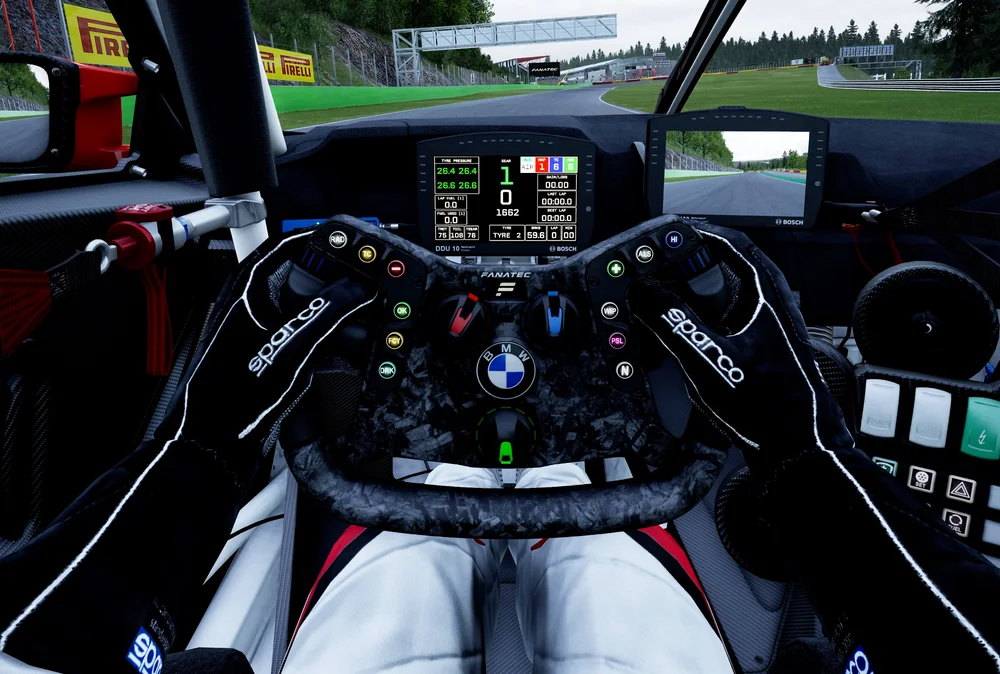Sim racing has evolved into a diverse and sophisticated discipline that caters to different types of drivers; from casual gamers to serious competitors. While consoles offer accessibility and convenience, many sim racers eventually make the switch to PC in search of greater realism, flexibility, and performance. Let’s explore the main reasons behind this transition.

Realism and simulation accuracy
Although the latest consoles have become incredibly powerful, a well-built gaming PC still delivers superior computational power and graphical performance, especially with modern GPUs.
PC simulators such as iRacing, Assetto Corsa Competizione, rFactor 2, Automobilista 2, and RaceRoom provide a far more detailed and realistic driving experience. They feature:
- Advanced physics models that simulate grip, suspension behavior, tire wear, and aerodynamics.
- More complex damage systems, including mechanical failures.
- In-depth telemetry for data analysis and setup optimization.
Console versions of racing titles tend to be simplified to maintain stable performance and accessibility, while PC simulators remove most of these limitations.
Total customization
One of the greatest advantages of sim racing on PC is freedom of customization. Drivers can fine-tune virtually every aspect of their setup:
- Graphics, force feedback, and control parameters can be adjusted with precision.
- Extensive modding support allows the addition of new cars, tracks, liveries, and third-party apps.
- Peripheral compatibility is nearly unlimited, offering complete freedom of choice.
On consoles, by contrast, the environment is closed and restricted to predefined settings.

Hardware compatibility and expansion
PCs support a much wider range of professional hardware.
Any Fanatec wheel base works natively on PC, along with load-cell pedals, H-pattern shifters, handbrakes, and motion systems. Enthusiasts can also use dashboard displays, button boxes, triple screens, and virtual reality.
Consoles often limit the number of recognized inputs, and many accessories are only partially supported or not compatible at all.

Graphics and performance
A well-tuned PC delivers:
- High and stable frame rates — essential for a realistic sense of speed and control.
- Superior graphics, lighting, and reflections.
- Multi-monitor and VR support for maximum immersion.
Even the newest consoles operate within fixed performance boundaries, leaving little room for personalization.
The Sim driver’s evolution
Ultimately, many sim racers switch to PC as a natural step in their progression. They seek:
- A more professional and immersive experience.
- The opportunity to train seriously and compete at higher levels.
- Greater freedom to grow, experiment, and refine their craft.

In short, moving from console to PC opens the door to the full potential of sim racing, where precision, performance, and passion meet.
PRODUCTS IN ARTICLE